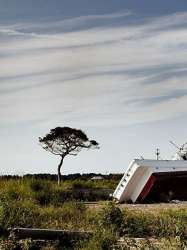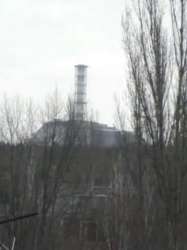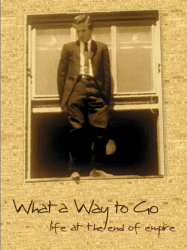White Knight est un film de genre Documentaire
White Knight (2012)

Si vous aimez ce film, faites-le savoir !
White Knight is a documentary film directed by Aarti Shrivastava. Its subject is Chewang Norphel, a 78-year-old engineer in Leh who, over the last 15 years, has invented and implemented a technology that is helping provide a solution to an ecological disaster created by climate change.
The land of Ladakh is grappling with an alarming water scarcity situation. In this high altitude desert where the melting of glaciers has been the traditional source of fresh water, a warmer planet is playing havoc with lifestyles and the ecology. With glaciers melting faster and leaving the people quite literally high and dry, fresh water is more precious than oil, especially post the Ladakhi summer. His solution uses common sense and elementary observational science to create artificial glaciers.
This film was created as a tribute to this man, and it honors him as a hero who relentlessly and persistently carries on a lone struggle against an insipid bureaucracy, myopic governance and a planet seemingly striking back as it adjusts to global warming. His crusade is to see his idea implemented on a grand scale in a sparsely populated region – with the sole mission of keeping this patch of earth inhabitable for the great-grandchildren of Ladakh.
Commentaires
Postez un commentaire :
Suggestions de films similaires à White Knight
Il y a 8965 ayant les mêmes genres cinématographiques, 2491 films qui ont les mêmes thèmes (dont 43 films qui ont les mêmes 3 thèmes que White Knight), pour avoir au final 70 suggestions de films similaires.Si vous avez aimé White Knight, vous aimerez sûrement les films similaires suivants :

My Atomic Aunt (2013)
Genres Documentaire
Thèmes L'environnement, La mer, Transport, Documentaire sur l'environnement, Documentaire historique, Documentaire sur le nucléaire, Documentaire sur les technologies, Film catastrophe, Catastrophe sismologique
Note67%





Surviving the Tsunami brings together social, environmental, and personal perspectives of the national catastrophe of the Fukushima nuclear meltdown. In the documentary, Kyoko Miyake travels back to her hometown in Namie, Fukushima, to revisit her old life and assess the trauma still lingering from the disaster. She revisits Namie, her mother's hometown and meets the people who depended on the success of the nuclear plant for their livelihood. The film also follows Bunsei Watanabe and Kyoko Miyake's Aunt Kuniko, two people who hope for the rejuvenation of Namie, despite the disaster that has occurred. Despite having lost family, friends, and jobs due to the meltdown and subsequent fear of the contamination zone, these two individuals are determined to rebuild their towns and neighborhoods and bring back the sense of community they once had. The film follows the residents of Namie, with emphasis on the experiences of Aunt Kuniko, as they come to terms with the reality of living in or near the "radiation zone" left in the wake the plant's nuclear meltdown. Surviving the Tsunami offers a different perspective on Japanese culture, national identity, human adaption, and global nuclear energy and proliferation.

Everything's Cool (2007)
Genres Documentaire
Thèmes L'environnement, Documentaire sur l'environnement, Film catastrophe
Acteurs Leonardo DiCaprio, Bill Maher, Oprah Winfrey
Note67%






White Horse (2008)
, 18minutesOrigine Etats-Unis
Genres Documentaire
Thèmes L'environnement, Documentaire sur l'environnement, Documentaire historique, Documentaire sur le nucléaire, Documentaire sur les technologies, Film catastrophe
Note69%





The beginning of the film starts with DeLeo, Bisson and Surkov driving through Kiev. This is introduced as the beginning of their journey to Pripyat, near the ground zero of Chernobyl. Once they reach the outpost outside the exclusion zone, we see that the area surrounding Pripyat is very deserted and dark. Once in the city, we see Surkov's old home, which he explains has been robbed of almost all its belongings due to looters. Yet there are still some mementos in the old apartment, including the wallpaper he and his mother put up, the training bars his father bought for him, an old rubber ball he claims was his favorite and a white horse poster plastered on the wall of his old bedroom. The pain he feels is evident. When he sees an old calendar on a door, he rips a large portion off, claiming "the year ended on April 26th". Outside the door of the apartment, he remarks how he wishes he could stay forever. He throws his old ball through the door and walks out of the apartment complex. The film ends with Surkov snapping some twigs in an old courtyard and then an image of the car they traveled in leaving the exclusion zone.

The Great Warming (2006)
, 1h25Origine Etats-Unis
Genres Documentaire
Thèmes L'environnement, Documentaire sur l'environnement, Film catastrophe
Acteurs Keanu Reeves, Alanis Morissette
Note64%





 , 2h3
, 2h3Origine Etats-Unis
Genres Documentaire
Thèmes L'environnement, Documentaire sur l'environnement, Documentaire sur la politique, Documentaire sur les technologies, Politique, Film catastrophe
Acteurs Daniel Quinn
Note75%






Tout peut changer (2015)
, 1h29Genres Documentaire
Thèmes L'environnement, Documentaire sur l'environnement, Film catastrophe
Acteurs Naomi Klein
Note63%






Les Yes Men se révoltent (2014)
, 1h31Genres Documentaire
Thèmes L'environnement, Documentaire sur l'environnement, Film catastrophe
Note66%





Les «Yes Men», le duo formé par Jacques Servin et Igor Vamos, alias Mike Bonanno et Andy Bichlbaum, dénoncent l'état du monde depuis deux décennies avec leurs sketchs, leurs dossiers de presse bidon et leurs fausses bonnes nouvelles. Ciblant les multinationales et les États complices, ferraillant contre la surexploitation des hommes et des ressources naturelles, ils s'en prennent ici au ministre canadien de l'Environnement, à la Chambre de commerce américaine et aux géants du pétrole Shell et Gazprom. En se faisant passer pour des dirigeants politiques, ils interviennent aussi par exemple dans un congrès pour annoncer que le gouvernement américain renonce aux énergies fossiles au profit des énergies renouvelables
 , 1h20
, 1h20Réalisé par Jeff Orlowski
Origine Etats-Unis
Genres Documentaire
Thèmes L'environnement, Documentaire sur l'environnement, Film catastrophe
Note76%





Le film traite des efforts du photographe James Balog et son Extreme Ice Survey pour dénoncer les effets du changement climatique.

Five Ways to Save the World (2006)
Origine Royaume-uni
Genres Documentaire
Thèmes L'environnement, Documentaire sur l'environnement, Film catastrophe

Chernobyl Heart (2003)
, 39minutesOrigine Etats-Unis
Genres Documentaire
Thèmes L'environnement, Documentaire sur l'environnement, Documentaire historique, Documentaire sur le nucléaire, Documentaire sur la santé, Documentaire sur les technologies, Film catastrophe
Note77%





La réalisatrice voyage à travers l'Ukraine et la Biélorussie et observe les effets de la catastrophe nucléaire de Tchernobyl. De nombreux enfants souffrent de problèmes cardiaques, ainsi que de sévères problèmes liés aux radiations.
 Connexion
Connexion